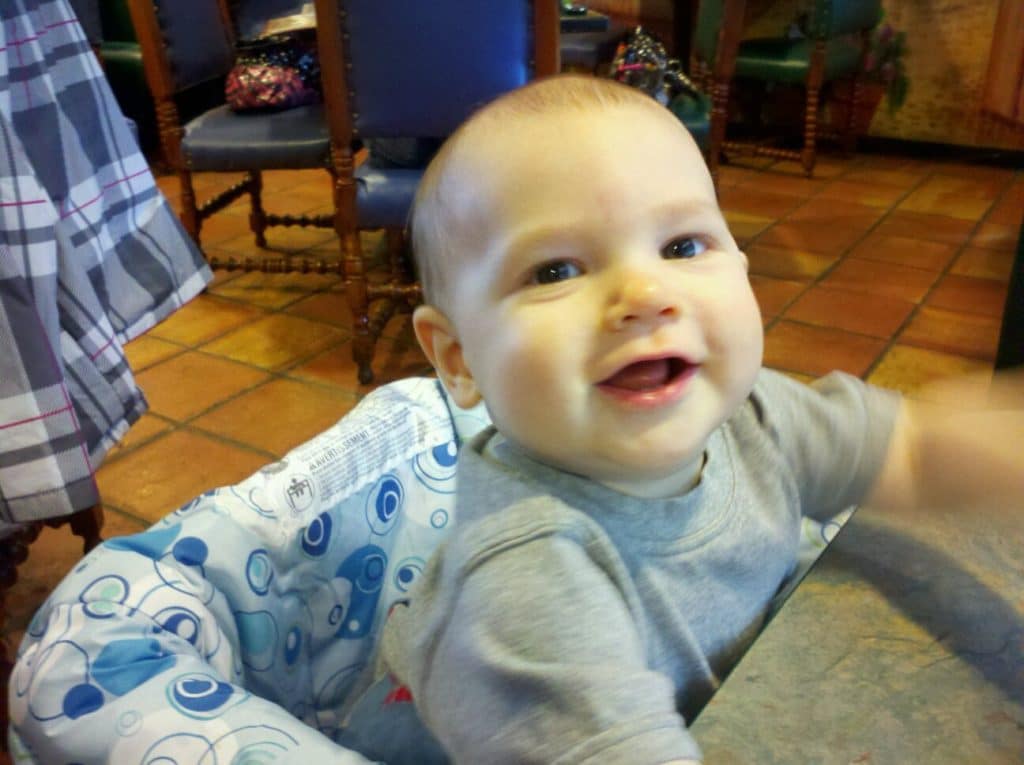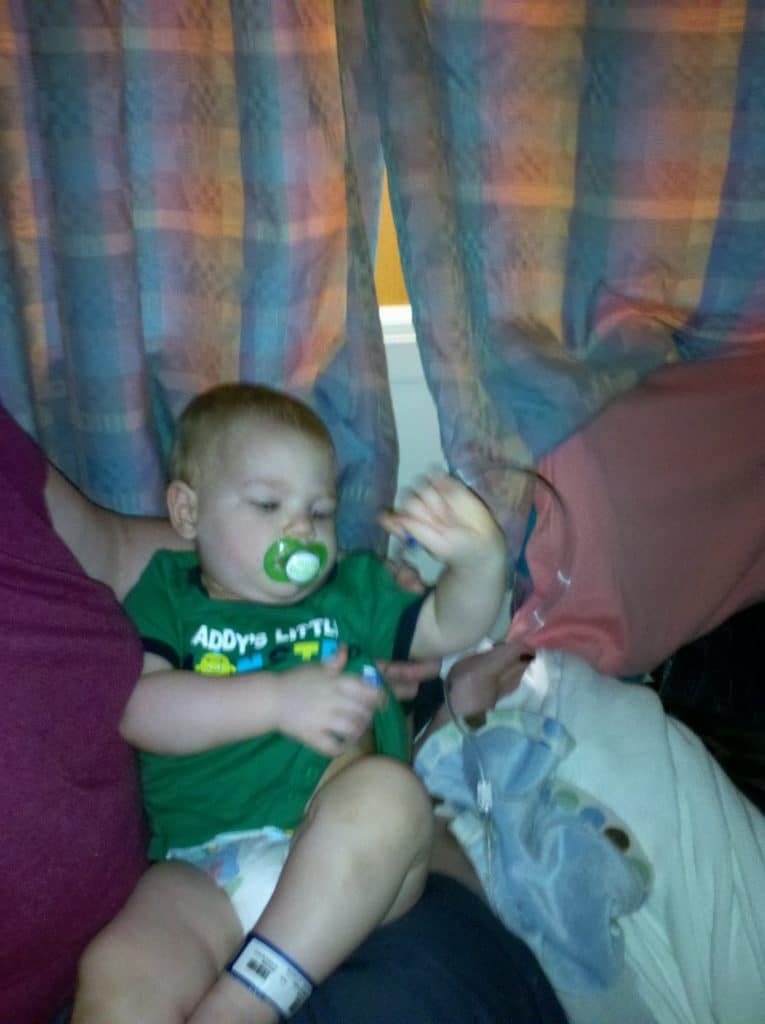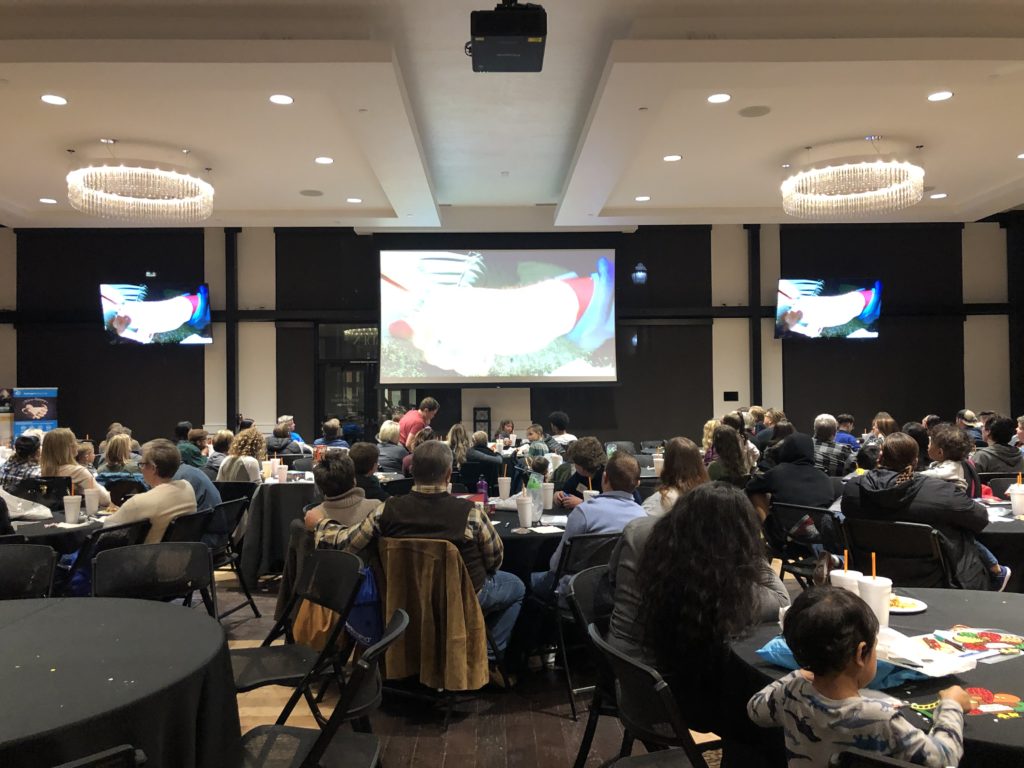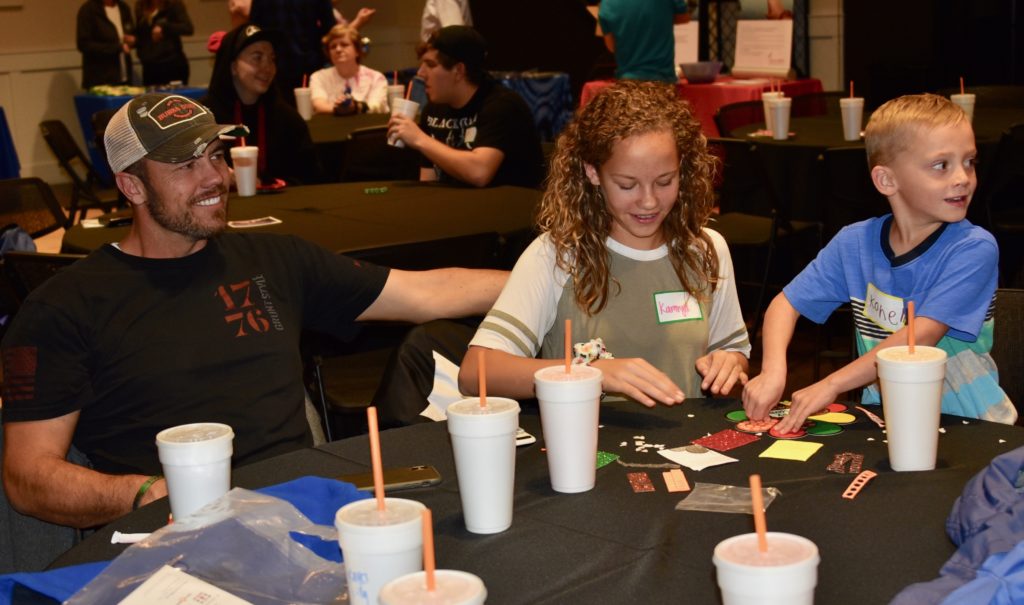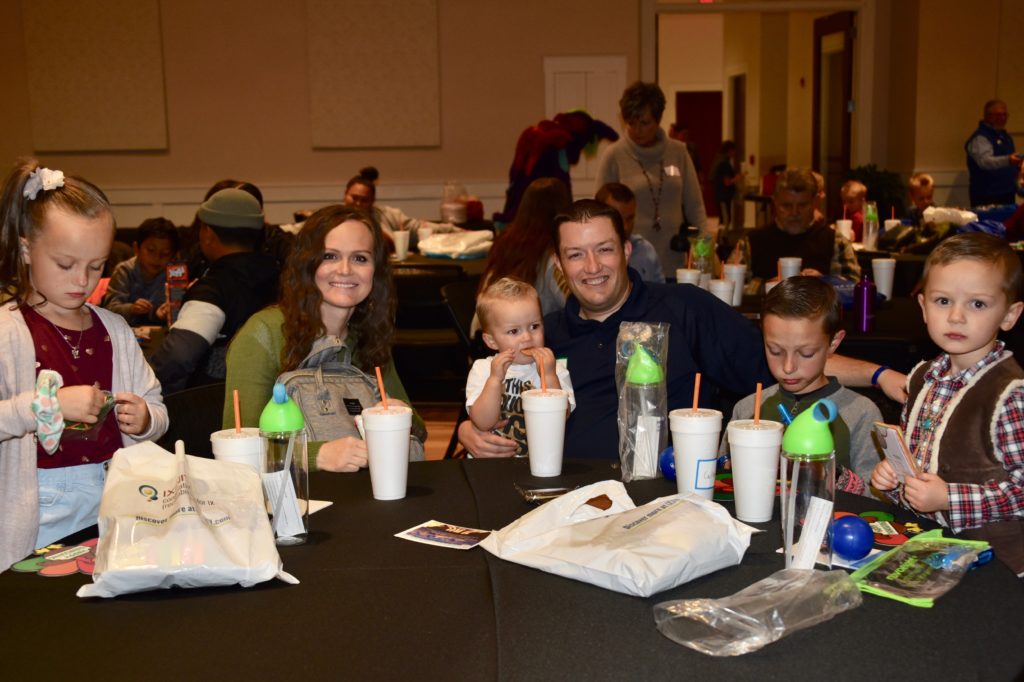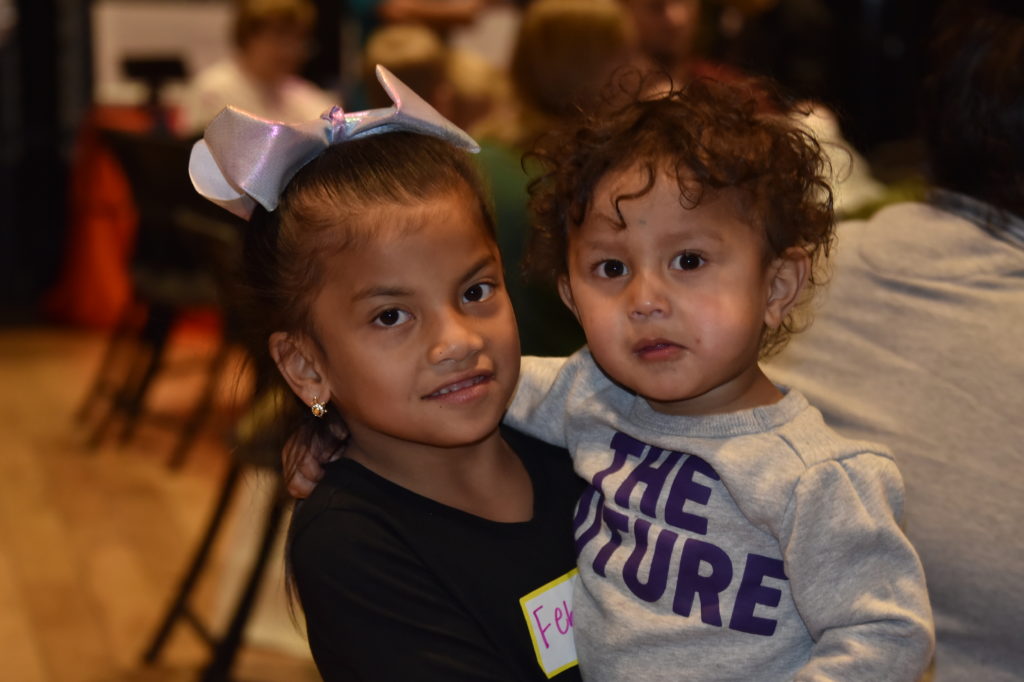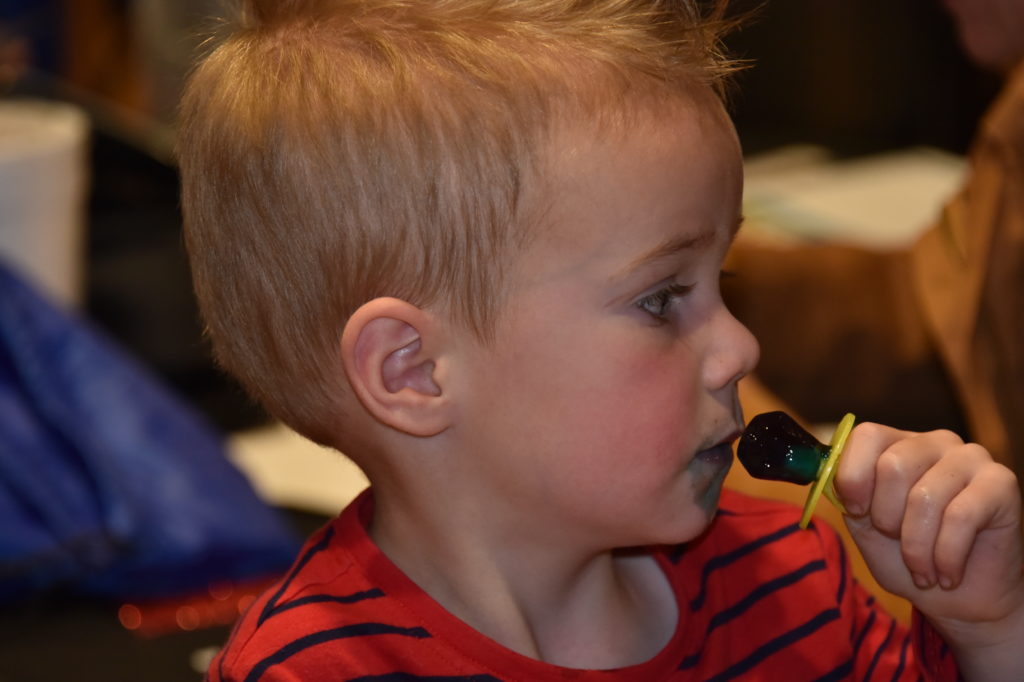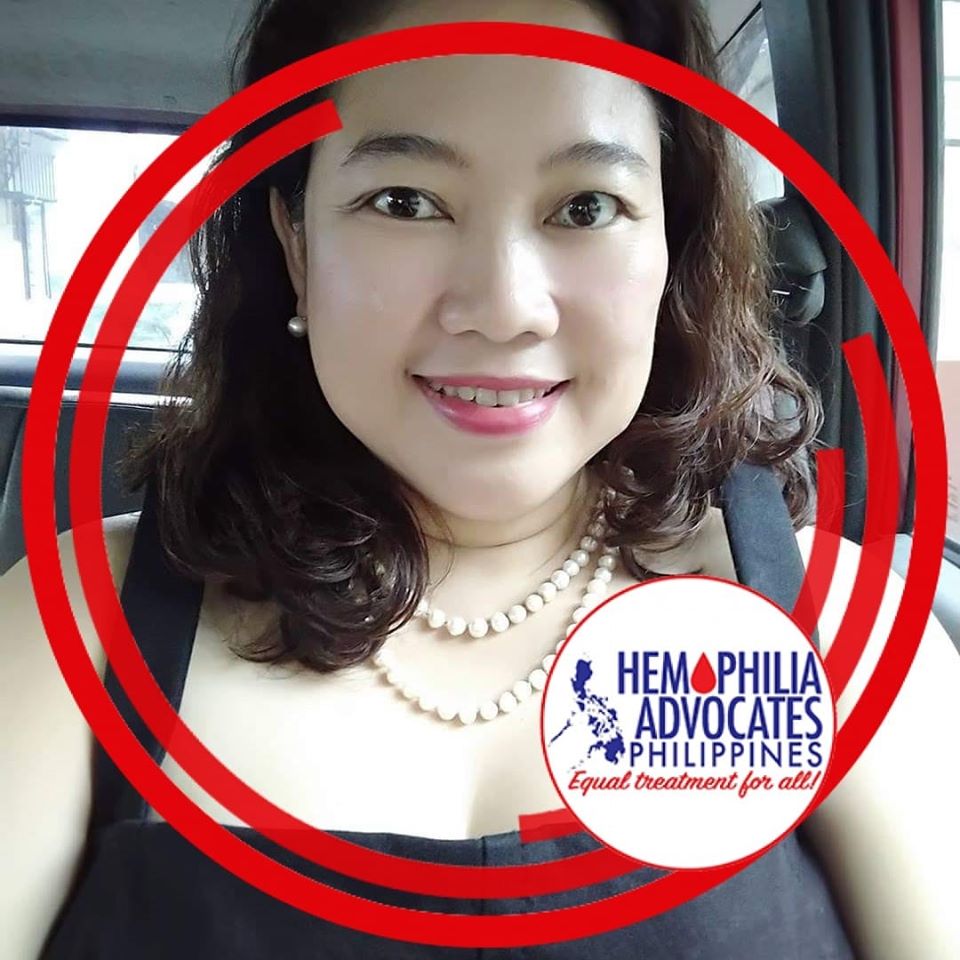Bubba’s Factor
Part 2 by Derek Markley
With Abbey happily moved over to a hotel, it was time for us to focus on getting Bubba to sleep. His little-kid incarceration was a concern. The main thing I remember was how incredibly horrible I felt seeing him in a hospital crib with metal bars raised on all sides. This had to be one of the saddest moments of my life. We knew he had to go to sleep, which he would not do quickly. He’d sit up and we’d have to reach through the bars to comfort him. It would’ve been easier to just push the bars down and play with him. Unfortunately, we knew he needed sleep. If we kept getting him out of bed, we’d be up all night.
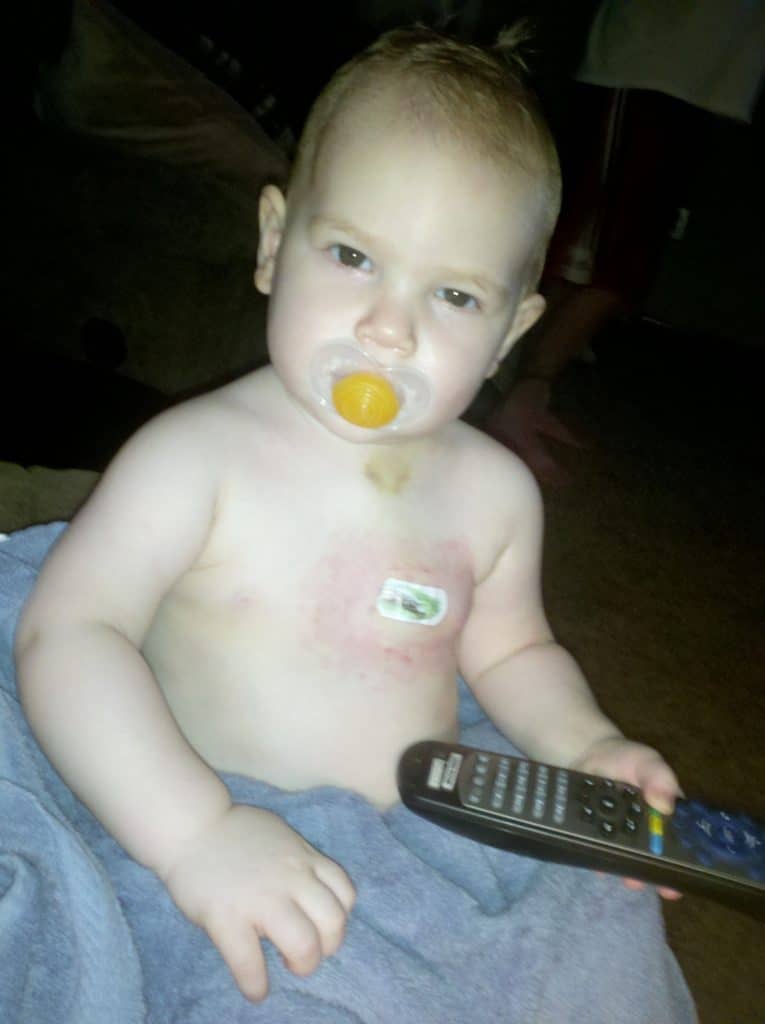
I was treated to having the lounge to myself. The chair/bed wouldn’t turn out to be the strangest thing, nor the sleeping in the middle of a lounge area. There was a shower in the lounge. You can’t make showering that close to strangers feel normal. Nothing else about our day was normal or comfortable. My son was in a metal cage and my wife was sleeping in a recliner beside him. We were in the middle of St. Louis and our son had blood that didn’t clot. We were going to send our small child into surgery, and he was going to have a metal disk placed in his chest.
The next morning I went down the hall to see Bubba and Ashley. We were about to have a very long day. We’d begin by having Bubba factored up. The people at St. Louis Children’s Hospital were adamant that his factor level would be through the roof to assure no complications during surgery.
Surgery day always means that the patient will be given some type of medication. Bubba was given medication. He went immediately loopy and it was hilarious. I’ve often wondered if they give little kids their meds slightly early so the resulting goofiness is something the family can enjoy. You’re given a break from the handwringing and gut churning that has been gnawing at you.
The unfortunate truth was that he would be heading to a surgical suite and we’d be left outside trying to put forth a normal countenance that masked the fact we were both on the brink of sanity. There was no parenting class called, “How to Not Go Feverishly Insane Because Your One-Year-Old Child is Having Surgery.” My palms are sweating a little bit right now just thinking back to that time. This is one of the uncomfortable truths about raising a child with a serious medical condition. You will have to experience things that are not a part of the lives of most parents. These things will be stressful and unpleasant. These things will make you feel like you want to vomit. These things will be necessary to assure that you can help your child deal with whatever disorder, condition, or ailment has become a part of his or her life.
After roughly 32 hours (my estimation may be skewed), the physicians emerged to tell us that the procedure was complete and Bubba was headed to recovery. Everything had gone as planned and the port was in place. Later that day the nurses would have to access the port to complete his next infusion. Post-surgery infusions were crucial to assuring that the healing process began properly.
There are not many feelings in this world that allow you to decompress as fully and quickly as you do when you’re informed that your child’s surgery went exactly as planned. After what seems like forever, you are allowed to let your weapons-grade stress level return to somewhat normal human proportions.
We were taken back to a general recovery area. Ashley was holding Bubba and gently speaking to him. We just needed his eyes to open. Any small indication of being awake would’ve be great. This should’ve been one of those Disney moments when the little kid opens his eyes, sees his mother, and produces a massive smile. Then a small sparrow would land on Ashley’s shoulder, chirp happily, and a warm sunset would be visible on the western wall of the recovery room.
That was not our outcome.
Next week: Post operation success?
Derek Markley lives in Saltillo, Mississippi with his wife Ashley and their children Abbey and Bubba. He is the executive director of two University of Mississippi regional campuses and an assistant professor in the school of education. Ashley is a fourth grade teacher in the Tupelo Public School District. Derek is author of The Bubba Factor, which can be ordered on Amazon.com.

